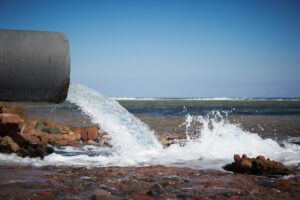The Short Answer
Yes — electric kettles are more energy-efficient than stovetop kettles for boiling water. They heat water faster, use less energy, and are designed specifically for precision and efficiency.
If you boil water regularly — for tea, coffee, cooking, or purification — switching to an electric kettle can be a small but meaningful step toward a more sustainable and cost-effective kitchen.
How Electric Kettles Work
Electric kettles contain a metal coil heating element at the base. When plugged in, electricity flows directly into the coil, rapidly heating the water in contact with it.
- Heat is transferred directly to the water
- Kettles are insulated to minimize heat loss
- Most have automatic shutoff to avoid overboiling
Stovetop Kettles: A Traditional Approach
Stovetop kettles heat water using indirect heat from gas or electric burners:
- Heat travels from the burner to the kettle, then to the water
- Heat loss occurs through the stovetop, air, and kettle walls
- No built-in shutoff — more prone to overheating or wasted energy
Energy Efficiency Comparison
| Kettle Type | Time to Boil 1 Liter | Efficiency (approx.) | Notes |
|---|---|---|---|
| Electric Kettle | 2–4 minutes | 80–90% | Highly efficient and quick |
| Gas Stovetop | 5–8 minutes | 30–40% | Energy lost to surrounding air |
| Electric Stovetop | 6–9 minutes | 70–75% | Slower and less targeted heating |
Cost and Energy Savings
Switching to an electric kettle can lead to:
- Lower utility bills (especially where electricity is cleaner or cheaper than gas)
- Reduced carbon footprint (if powered by renewable electricity)
- Faster daily routines
Example:
If you boil water for tea twice a day:
- Electric kettle =
0.04 kWh per use → **$3–$5/year** - Gas stove = more energy and time → higher cost and carbon impact
Safety and Convenience
- Auto shutoff prevents boiling dry or overheating
- Cool-touch designs reduce burn risk
- Cordless or base-mounted kettles are easier to use and clean
Sustainability Considerations
1. Energy Source Matters
- If your home uses renewable electricity (solar, wind), electric kettles have a much lower footprint than gas
- If electricity is fossil-fuel based, the efficiency is still generally higher than natural gas for small-volume heating
2. Materials and Durability
- Choose stainless steel or glass kettles over plastic
- Look for models with replaceable parts and long warranties
- Avoid disposable or ultra-budget kettles that may fail early
3. Boil Only What You Need
- Avoid overfilling — boil exactly the amount of water you need
- This saves energy and shortens boil time
4. End-of-Life Disposal
- Recycle metal and electronics properly
- Check with local e-waste programs or appliance recyclers
Common Questions
- Are electric kettles better for the environment?
Yes — they typically use less energy and can be powered with renewable electricity. - Do electric kettles use a lot of electricity?
No — they’re one of the most efficient small appliances in the kitchen. - Is it faster to boil water in a kettle or on the stove?
A kettle is almost always faster, especially for small quantities. - Can I use an electric kettle for cooking?
Yes — for boiling water quickly for pasta, oatmeal, or pour-over coffee. Then transfer it to a pot or mug. - Are plastic kettles safe?
Choose BPA-free models, or better yet, go with stainless steel or glass for long-term health and durability. - Do induction stovetops close the efficiency gap?
Somewhat — induction is more efficient than gas or coil, but electric kettles are still faster and more specialized.
Final Thoughts: Small Changes, Big Impact
Switching from a stovetop to an electric kettle may seem minor, but it’s one of the easiest ways to reduce energy waste and speed up daily routines. Efficient, affordable, and adaptable, electric kettles help you live a more sustainable life one cup at a time.
For an eco-conscious kitchen, combine an electric kettle with mindful water use, efficient appliances, and renewable energy — and you’ll be boiling smarter for the planet.









Reader Interactions